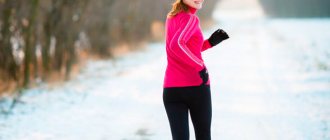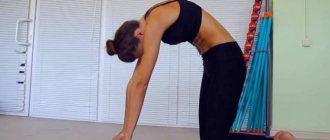Why is it important to develop dexterity?
Traditionally, agility exercises are considered “childish.” School physical education includes somersaults, relay races and various types of jumps. “Unfortunately, as people age, they stop devoting time to developing dexterity, even if physical activity is an integral part of their lives. – says Artem Opalnitsky. – Agility exercises included in regular training will allow you to:
Improve coordination. Due to lack of physical activity, muscles atrophy - lose strength, and, as a result, the risk of injury increases. Remember that as we age, our bones become brittle and we need to spend more time developing dexterity.
Reduce reaction speed. In unforeseen situations: you slipped or stumbled, your dexterity will determine how quickly your muscles manage to adapt to the situation and stabilize your body position.
Prolong joint health. Physical activity improves the trophism (nutrition) of the joints, their cells are renewed, slowing down degenerative processes and increasing mobility.
Get rid of stiffness. With insufficient intermuscular coordination, stiffness appears. Agility exercises will give your movements fluidity and confidence.
Learn to maintain balance. Maintaining static balance (posture) will be easier if you spend time developing dexterity. You will be able to stand on a bus whose driver slammed on the brakes, and stay in yoga asanas longer.”
Taking the time to develop your dexterity can pay off in unexpected ways and save you money on a new smartphone. “We often encounter a situation where the phone falls out of our hands. If a person has dexterity, it will be easier for him to catch the device. He will react faster than people who do not develop this skill,” says Peter Bocharov.
Determining the level of coordination
There are many ways to determine the level of coordination. But to assess general physical readiness, only two will be enough.
- Almost every member of the stronger sex who has undergone a medical examination for military service is familiar with this method. We stand up straight with our arms stretched out in front of us. We close our eyes and alternately try to touch the tip of our nose with the index finger of each hand.
- We try to maintain balance while standing on one leg. At the same time, we take the second leg back, holding it with our hand. We extend our free arm forward, parallel to the floor. After holding this position for half a minute, we change legs.
Not everyone succeeds in this, but that is why failures exist, so that you can learn to overcome them. Of course, it is better to develop dexterity and coordination from an early age, because then our body is more flexible and responsive to any training. However, even if you have crossed the threshold of 25-30 years, nothing (except your own passivity) will prevent you from developing a lightning-fast reaction. Let's see by what means this can be achieved.
How often to do agility exercises
There are skills that, once acquired, we never part with. For example, you cannot forget how to ride a bicycle. Unfortunately, dexterity is easy to lose. To ensure that the skill is not lost, you should develop it regularly throughout your life. “Perform agility exercises 2-3 times a week,” comments Peter Bocharov. Add them to your regular workouts or dedicate separate days to developing agility.
“If you plan your own sports activities, then on fasting days between strength training, do 2-3 agility exercises. This will help you recover better and acquire new skills,” recommends Artem Opalnitsky.
As agility exercises become part of your athletic routine, keep an eye on the level of difficulty. As soon as you begin to cope with a task easily and confidently, look for a new one or complicate the current exercise. This practice will make your agility development intense and your training varied.









